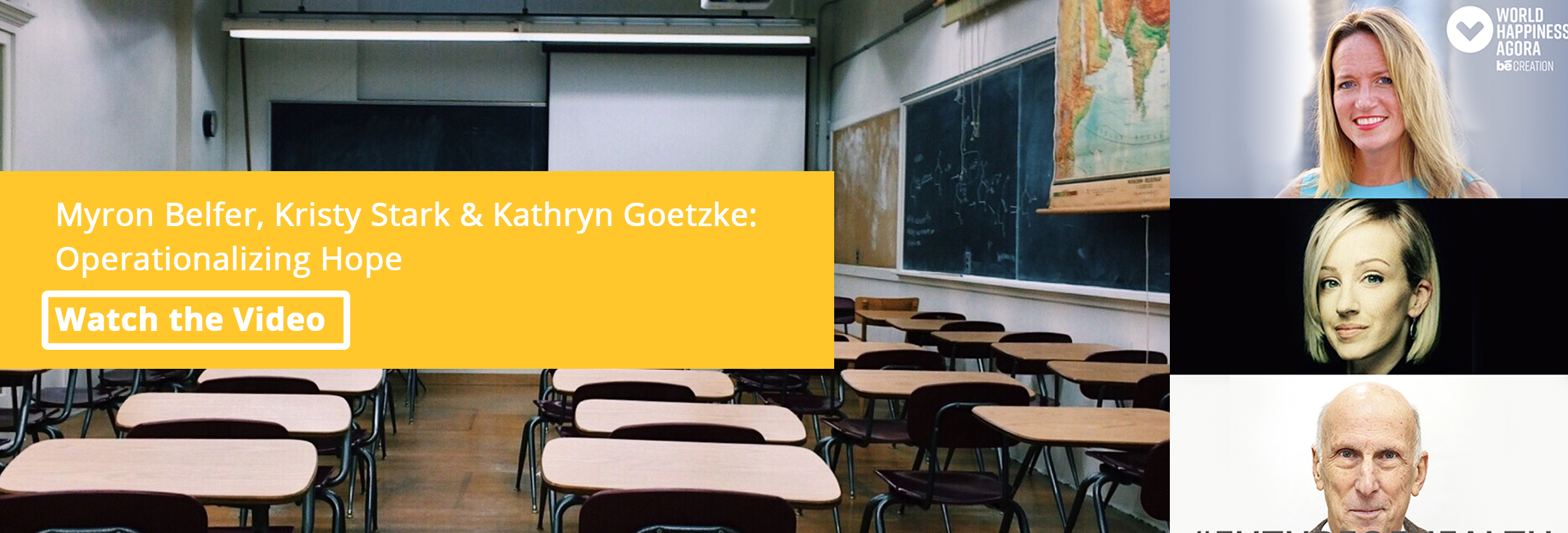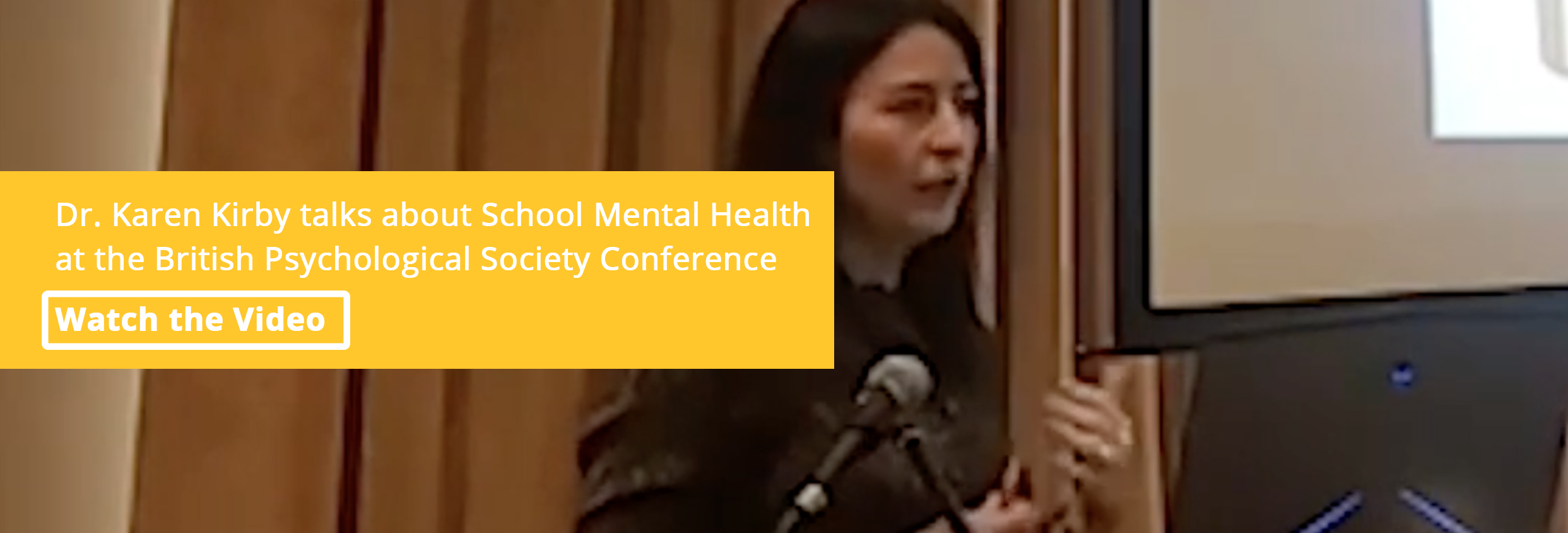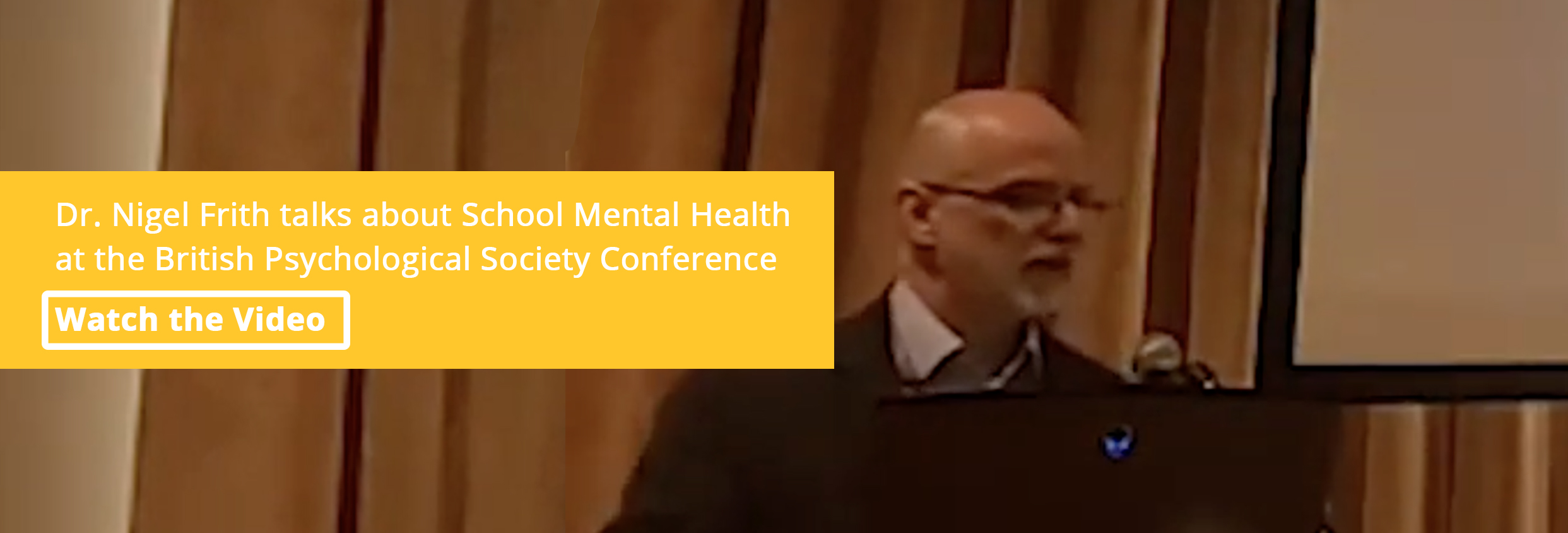What is Hope? There are many definitions of hope, but we reverse-engineered hopelessness to create our definition of hope. As hopelessness is both emotional despair and motivational helplessness, we used these two constructs to define hope, and our definition aligns with experts in the science of hope.
We define hope as a vision for the future fueled by positive feelings and inspired actions. Positive feelings are those feelings that help us to stay hopeful as we work towards our goals. Inspired actions are steps that propel us toward our goals. Both feelings and actions are critical to hope, differentiating hope from a “wish.”

We developed Five Keys to SHINE Hope: Stress Skills, Happiness Habits, Inspired Actions, Nourishing Networks, and Eliminating Challenges. The Hopeful Minds curriculums, which introduce students to the “what,” “why,” and “how” of hope, introduces students to these important skills and strengthen their hope muscles.
What kinds of societal returns can we see for teaching Hope? The impact is quite broad, and hope has many positive outcomes you may not expect beyond mental health. Below are published studies completed using our Hopeful Minds curriculum.
- Developing Hopeful Minds: Can Teaching Hope Improve Well-Being and Protective Factors in Children? (Kirby et al., 2021)
- Findings: Using the “Hopeful Minds” 12-week curriculum, the researchers found significant improvements in “each of the well-being scores of anxiety, depression, resilience, positive emotion, reduced negative emotion, emotional control, stoicism, social support seeking and self-care” within their sample.
- The Effectiveness of Hopeful Minds Program among Primary School Children in Malaysia: A Preliminary Study (Ghazali et al., 2021)
- Findings: With hope education, depression symptoms decreased. Moreover, children improved in their negative emotion regulation.
- The Hopeful Minds Programme: A Mixed Method Evaluation of 10 School Curriculum-Based, Theoretically Framed Lessons to Promote Mental Health and Coping Skills in 8-14-year-olds (Kirby et al., 2021).
- Findings: Using the “Hopeful Minds” curriculum, the researchers found “increased emotional insight and awareness; improved resilience, confidence, self-belief, and developing new coping skills” within their sample.
Unpublished Hopeful Minds Research
We are tirelessly working to spread information about hope and are constantly preparing materials for dissemination. Below are some of our works not published elsewhere.
- Schools for Hope – Implementation with Late Elementary Students at the Fifth Grade Level (Kathryn Goetzke, 2014)
- Findings: The Hope curriculum administered to students effectively increased the participants’ understanding of hope.
- Schools for Hope Randomized Control Study Conducted in Suriname, South America (Kathryn Goetzke, 2015)
- Summary: The Hope curriculum administered to students effectively increased the participants’ understanding of hope.
- Hope in an Era of Despair (Belfer et al., 2022)
- Summary: This paper provides a brief literature review of hope-related research and serves as a call to action for more hope-related intervention research.
- School for Hope Program Executive Summary (iFred, 2015)
- Summary: The researchers found that the Hope Program increases students’ comprehension of hope through a ten-lesson protocol between the Spring and Fall.
- School for Hope Program Executive Summary (iFred, 2014)
- Summary: Through this pilot study, twelve fifth-grade classrooms completed the hope-based curriculum and findings indicated the curriculum successfully improved the students’ understanding of hope.
Other Hope Research
Hope research spans beyond our organization, and we want to empower our readers with knowledge. Below is an overview of some significant findings within the hope research based on the three common themes we have found within the literature: (1) benefits of hope in school/work, (2) benefits of hope on health, and (3) benefits of hope on the environment. Additionally, brand-new research has shown that hope is necessary for resilience.
A comprehensive database of hope literature is located here.
Benefits of Hope in School/Work
- Hope Helps Workplace Performance
- Hope’s improvement in positive emotions can lead to a 14% improvement in productivity in workplace settings. Hope outperforms workers’ intelligence, optimism, and self-efficacy (Journal of Positive Psychology, 2013; Workhuman, 2022).
- Multiple top-tier magazines have stated that business leaders must incorporate hope into their practice to have the greatest outcomes (Forbes, 2019; Strengths Based Leadership, 2009).
- People with higher hope are more likely to remain with their employers (Business Strategy and Environment, 2022).
- Hope Improves Academic Outcomes in College Students and Primary School Students.
- Hope predicts academic achievement over intelligence, personality, and previous academic achievement (Journal of Research in Personality, 2010; Journal of Research in Personality, 2011 ).
- Hope involves cognition and behavior; cognitive hope predicts school engagement, academic achievement, and anxiety/stress levels (Psychology in the Schools, 2019).
- Hope Predicts Athlete Performance
- Three studies found that hope predicted athletic outcomes beyond the athlete’s training history, self-esteem, confidence, and mood (Journal of Personality and Social Psychology, 1997).
Benefits of Hope on Health
- Higher Hope reduces Stress, Anxiety, and Depression.
- Higher levels of hope protect against depression and anxiety in youth. Anxiety and depression do not impact one’s ability to develop hope; thus, strengthening your hope muscle can help prevent depression and anxiety in the future (Journal of Personality, 2007).
- Hope explains the relationship between mindfulness meditation practice and stress reduction. With hope, mindfulness effectively reduces stress (Research on Social Work Practice, 2016).
- Hope Protects Against Suicide
- Higher levels of hope protect against suicidal ideation and subsequent suicidal attempts (PLoS One, 2015).
- The opposite of hope, hopelessness, is the strongest predictor of completed suicide (PLOS, 2015).
- Hope is a Predictor of Positive Emotions
- Hope and optimism are not synonymous; hope is a predictor of positive emotions (Journal of Positive Psychology, 2009).
- People with Higher Hope Find Life More Meaningful
- Hopeful people have a greater sense that life is meaningful (International Journal of Existential Psychology & Psychotherapy, 2010).
- Hope Lowers the Risk of Death
- Harvard researchers have found that those with higher hope live longer and have less risk of developing chronic conditions and cardiovascular disease (Harvard, 2021).
- People with Higher Hope have Fewer Sleep Problems
- With a reduction in stress and increased well-being, people with higher hope have less difficulty falling asleep at night (Aging and Mental Health, 2018).
- Hope Protects Against Severe Trauma-Related Symptoms
- Participants with low levels of hope experienced the highest intensity of trauma-related symptoms (Personality and Individual Differences, 2016).
- People who have Psychosis have Better Outcomes with Hope
- A hope-based treatment effectively reduces hospital admissions, relapse, and suicide rates among individuals with psychosis (Review Article, 2007).
- People with higher levels of hope are in overall better physical health
- People with higher levels of hope have better immune systems than those with lower levels (Stress in the Laboratory, 1986).
Benefits of Hope on the Environment
- Hope Helps Supports the 17 Goals of the United Nationals Sustainable Development Plan
- The Sustainability Development plan aims to cultivate peace and promote prosperity for people across the globe through 17 goals focused on improving the population’s health, financial stability, and environmental preservation.
- Hope can work to meet those goals because it-
- Promotes health and well-being,
- improves educational outcomes,
- Helps increase an individual’s earnings,
- Communal hope can help promote environmental preservation efforts.
- Investing in hope intervention and prevention programs can also improve the economy by reducing the cost of mental health.
Hope and Resilience
- Hope is a Precursor to Resilience
- We know resilience is essential for surviving adversity, and up until recently, it was believed that resilience is a precursor for hope. However, we now know that hope is the precursor for resilience, providing more evidence that we must work to teach everyone how to hope (Current Psychology, 2022).
As you can see, hope plays a crucial role in many qualities that can impact well-being and human survival. So understanding hope as a skill, operationalizing it in communities, and engaging communities in its practice can impact our world beyond measure.
Join us in teaching Hope. In strengthening societal hope. In infusing Hope into everything you do, and we do.
Sign up for our newsletter, and join our social media outlets @ifredorg spreading the message of hope using hashtags #spreadhope #teachhope #hope #hopefulminds.


